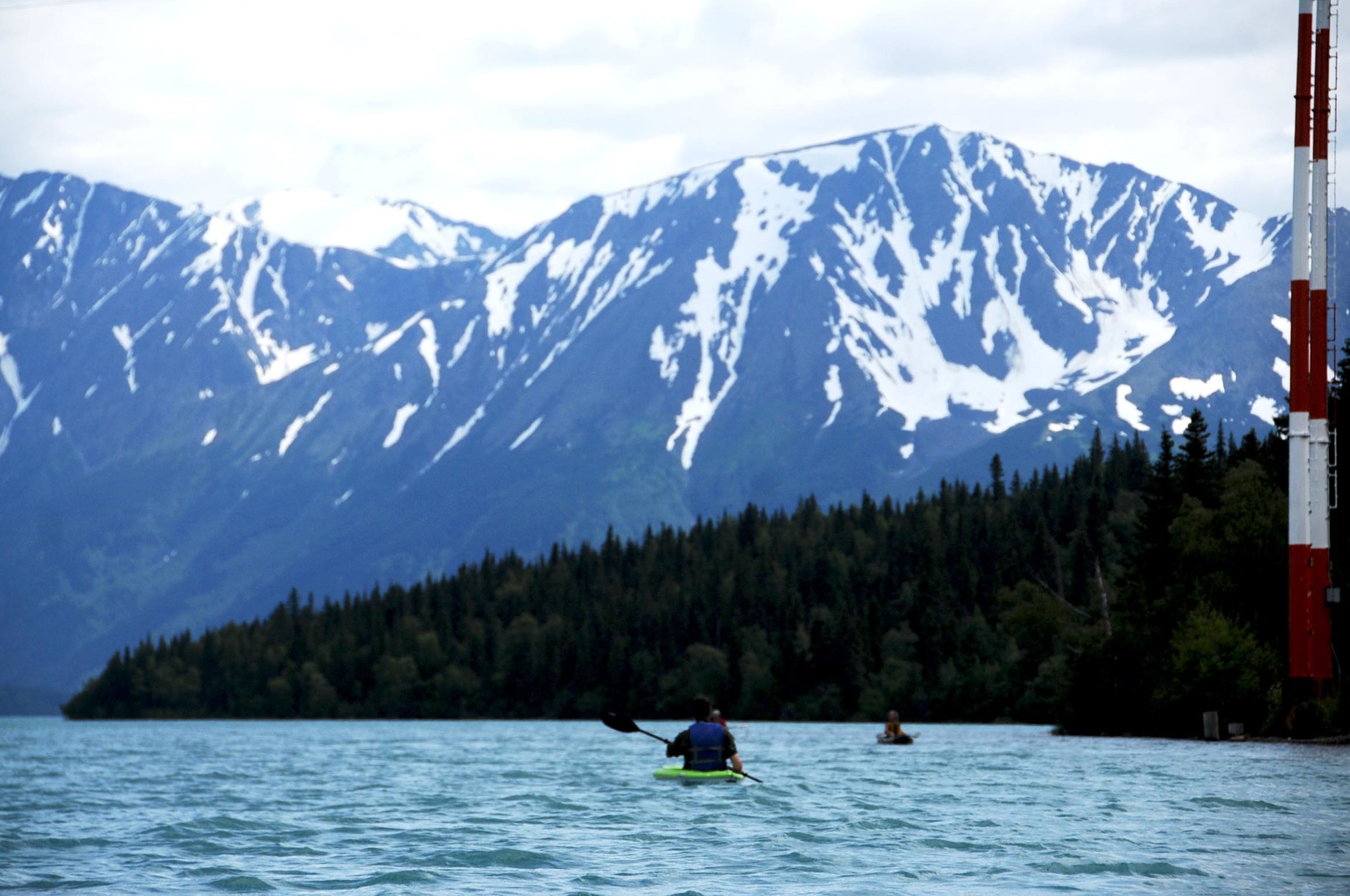Not everyone on the Kenai Peninsula’s rivers and lakes is out with a big boat.
In recent years, more people have been heading onto the water in smaller craft like kayaks, rafts and canoes. While most of the Kenai River and the peninsula’s lakes are relatively calm waters, they’re also in Alaska, where the water can be unforgivingly cold.
Kayaking is a popular activity on the Kenai, where freshwater kayaking and ocean kayaking are readily accessible. Every once in a while, though, someone is killed, like a longtime Homer fisherman and accomplished kayaker who died on a kayaking trip on Kachemak Bay in November 2016. The Warren Ames Memorial Bridge in Kenai bears the name of a 22-year-old man who drowned in the Kenai River in 1973 while canoeing through the Naptowne Rapids.
Many people go into kayaking fairly casually, expecting the skills and safety to be inherent knowledge, said Matt Pyhala, a sea kayaker and an instructor at the Soldotna-based Immersion Paddling Academy.
“People often don’t know what they don’t know until they know that they don’t know it,” he said. “… Even though the Kenai River is for the most part maybe a Class 1, Class 2 river, there are sections that have a lot of danger. Then the boat traffic, whatnot.”
The main dangers of the Kenai, outside the relatively short whitewater sections at Schooner’s Bend, Kenai River Canyon and the Naptowne Rapids, are the swift current and the cold temperature. When someone hits the cold water — the Kenai River can reach a balmy 62 degrees in the hottest days of July — the temperature differential can shock the breath out of them, causing them to inhale and potentially get water into their airways. This is called shock drowning and is common, Pyhala said.
“If you aspirate water, you drown as soon as you go over,” he said. “That’s one of the things why we go for the dry suit. It defends against that.”
Not only kayakers frequent the Kenai River and its tributaries. People have also taken to rafts of various sizes, from smaller craft like catarafts — rafts ranging from 12 feet to 18 feet long with inflatable tubes on either side — to the larger rafts meant to carry 10 people on a guided tour. The Alaska Rivers Company runs multiple raft trips a day on the upper and middle Kenai River out of Cooper Landing but hasn’t lost anyone into the river yet, said Erik Route, co-owner of the company.
“The thing is with the Kenai, we like to call it the sleeper river because if you’ve been boating, it’s isn’t necessarily a technical river but it moves very swiftly and the water’s very cold,” he said.
Before heading out, rafting guides coach people on how to stay safe, including how to get into the swift-water position — basically, floating on your back with your legs pointed downstream and working toward shore until the river becomes shallow enough to stand up or the boat can intervene, he said. The company doesn’t require people to wear dry suits or wet suits, but they do require personal floatation devices, a critical part of safety on the water, he said.
“That’s the biggest thing that gets people,” he said. “A lot of accidents that happen on the river are Alaskans who get themselves in trouble because they’ve been down it hundreds of times, but it just takes the one time.”
Many people who come into Pyhala’s classes have never done a wet exit, which is getting out of the kayak after it has flipped while hanging onto gear and not panicking, he said. When he teaches classes in the winter at the Skyview Middle School pool in Soldotna, that’s one of the first things he teaches, he said. People may come in wanting to learn to flip back over and self-rescue first, but that’s a more advanced skill and there are more basic things to master first, he said.
“Once people are comfortable with that, we work on some of the basic strokes and maneuvers,” he said. “… Body, boat and blade are three areas that we have influence on what we want to do.”
Both Pyhala and Route recommended carrying a dry bag with equipment like a dry set of clothes, material to start a fire, food and basic first aid and having a whistle on personal flotation devices. Route also recommended people check their equipment before heading out on the water. For kayakers, Pyhala recommended having an unpinning kit and a throw bag in case someone loses their boat and it becomes pinned, which is less likely to happen on the Kenai River, where there are fewer rocks and narrow canyon walls. He also recommended a helmet “because you don’t see that rock until you hit it.” One less concrete thing to take along, though, is a plan.
“I think that’s where a lot of the shortcoming is, especially for people who are getting into kayaking and haven’t done much of it,” Pyhala said. “Just having that laid out so that if something does go sideways, it’s not thinking in the moment, ‘What are we going to do?’”
Pyhala said he wasn’t sure if he would be teaching classes in the spring, but there are a number of kayaking instructors around the peninsula and guides based in Whittier, Seward and Hope who can offer help. The American Canoe Association also offers resources on its website and a database of ACA-certified instructors. Route said people can book trips with the company at any time, and the raft trips sometimes have spots open at short notice.
Reach Elizabeth Earl at elizabeth.earl@peninsulaclarion.com.

